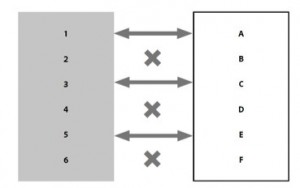 Conceptual integration and educational analysis (HSRC Press, 2015) provides an account of how the key act of conceptual integration works in education. ‘Integration’ is a highly contested logic within education, especially in South Africa, where ‘integration’ dominated the policy transition from Apartheid education to transformative outcomes based education and learner centered pedagogy. Teachers were expected to be able to do conceptual integration without any clear account of how it worked. This book provides 10 analytical case studies of how conceptual integration actually works, enabling the reader to do the same in their sphere of expertise. Technically, the act of conceptual integration refers to the following dynamic – a pedagogic process where two different zones are brought together in a way that spots what is similar and different in them, allowing for an imaginative synthesis that brings out what is significant and leaves out what is minor, contradictory or confusing. The better we understand this act in its own terms, the easier we can escape ideological usages that argue for and against conceptual integration without understanding how this key process of pedagogy works.
Conceptual integration and educational analysis (HSRC Press, 2015) provides an account of how the key act of conceptual integration works in education. ‘Integration’ is a highly contested logic within education, especially in South Africa, where ‘integration’ dominated the policy transition from Apartheid education to transformative outcomes based education and learner centered pedagogy. Teachers were expected to be able to do conceptual integration without any clear account of how it worked. This book provides 10 analytical case studies of how conceptual integration actually works, enabling the reader to do the same in their sphere of expertise. Technically, the act of conceptual integration refers to the following dynamic – a pedagogic process where two different zones are brought together in a way that spots what is similar and different in them, allowing for an imaginative synthesis that brings out what is significant and leaves out what is minor, contradictory or confusing. The better we understand this act in its own terms, the easier we can escape ideological usages that argue for and against conceptual integration without understanding how this key process of pedagogy works.
The book is freely downloadable (from 2015) on the HSRC website www.hsrcpress.ac.za.
Introduction (Wayne Hugo)
Chapter 1: Using conceptual integration for educational analysis: a step by step guide (Wayne Hugo)
Chapter 2: A contextual elaboration of where conceptual integration comes from and why it is useful for educational analysis (Wayne Hugo)
Chapter 3: Analogy but no disanalogy: the case of urban slums (Carol Bertram)
Chapter 4: An analysis of the pedagogic models used by school economics textbooks (Suriamurthee Maistry)
Chapter 5: Unpeeling teacher and learner movement between real world and classroom genres with conceptual integration (Fiona Jackson)
Chapter 6: Conceptual integration in the development of alphabet knowledge (Clare Verbeek)
Chapter 7: The heart as a pump (Ted Sommerville)
Chapter 8: Conceptual integration in science: a solar system in an atom (Kavish Jawahar and Tabitha Mukeredzi)
Chapter 9: A transforming pedagogic space: the school crest (Jenni Karlsson)
Chapter 10: Conceptual integration in vector-kinematics (Nadaraj Govender)
Chapter 11: When conceptual integration isn’t: examples from Mathematics education (Iben Maj Christiansen)
Chapter 12: Conclusion- Using conceptual integration as a descriptive and proscriptive tool of analysis (Wayne Hugo)